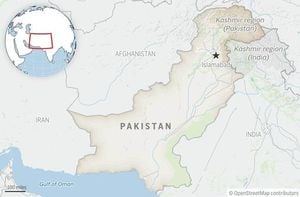On August 12, 2025, a new study from the University’s Sensory Evaluation Center delivered a spicy twist to the ever-evolving world of dietary science. According to findings published in Food Quality and Preference, adding dried chili pepper to meals can help reduce calorie intake by slowing down how quickly we eat—without making the food any less enjoyable. This revelation comes as more people around the globe seek practical, sustainable ways to manage their weight and improve their health.
Lead author Paige Cunningham explained the inspiration behind the research: "We know from previous studies that when people slow down, they eat significantly less. We suspected that making a meal spicier might slow people down. We thought, let's test, under controlled experimental conditions in the lab, if adding a small amount of spice, but not so much that the meal is inedible, will make people eat slower and therefore eat less." The results confirmed their hunch: a little heat really can help tamp down overeating.
The experiment was straightforward but carefully designed. Researchers served 130 adults one of two lunch meals—either beef chili or chicken tikka masala. Each dish came in two versions: one with mild spices and one with a spicier kick. The spiciness was precisely controlled by tweaking the ratio of hot to sweet paprika, ensuring the flavor stayed consistent even as the heat increased. Participants’ eating speed, the amount of food and water consumed, meal duration, and appetite ratings were all meticulously recorded before and after the meal. The outcome? Increasing the spiciness reliably slowed people down and reduced their overall calorie intake.
"Formulating the recipes took a long time for the chicken tikka. It took so many rounds of testing that my lab mates were sick of it. But science is about trial and error. I'd make a recipe, see how far I could push the spiciness, and we'd taste it. We did that until we reached a level where palatability was matched even when spiciness increased," Cunningham shared, giving a glimpse into the real-world challenges of food science research.
Perhaps most impressively, the researchers found that the reduction in intake happened without any negative impact on how much the participants liked the food. As John Hayes, Penn State professor of food science and corresponding author, noted, "What’s critical here is that the reduction in intake occurred without negatively impacting how much participants liked the food." That’s a win-win for anyone who loves flavor but wants to cut back on calories.
This study dovetails neatly with broader dietary trends, particularly the growing popularity of plant-rich, sustainable eating patterns like the Planetary Health Diet (PHD). As described in a November 2025 review, the PHD—also known as the EAT–Lancet reference diet—was developed to align human nutrition with the ecological limits of our planet. The goal is ambitious: to promote human health and reduce the risk of chronic diseases such as cardiovascular disease, type 2 diabetes, obesity, and certain cancers, all while keeping food production within sustainable planetary boundaries.
The PHD is a flexitarian, health- and environment-oriented eating pattern. It emphasizes vegetables, fruits, legumes, nuts, whole grains, and unsaturated oils, while recommending limited consumption of red meat, pork, poultry, eggs, dairy, potatoes, and added sugars. Ultra-processed foods and refined sugar are to be consumed only occasionally. According to Frontiers in Public Health and European Journal of Nutrition, this approach supports cardiovascular and metabolic health, and large cohort studies have linked sustainable diets like the PHD to lower rates of chronic diseases.
Environmental benefits are also front and center. The PHD reduces demand for resource-intensive products, lowers greenhouse gas emissions, and helps conserve water and soil. By supporting biodiversity and healthier crop rotations, the diet aims to reduce incentives for deforestation and monoculture farming. But as Sustainable Production and Consumption points out, the environmental impact of specific foods—even healthy ones—can vary depending on how and where they're produced.
One of the PHD’s strengths is its adaptability. The EAT-Lancet Commission designed the diet to be flexible, allowing countries and cultures to tailor the core principles to local crops, cuisines, and supply chains. For example, Mediterranean nations already align closely with PHD principles thanks to their high intake of vegetables, fruits, and unsaturated fats. In contrast, North American and Latin American diets tend to include more red meat and added sugars, presenting a greater challenge for adherence.
Global assessments show wide variation in how closely populations follow the PHD. Lebanon, Tunisia, Greece, Egypt, Libya, and Cyprus score among the highest, reflecting plant-rich diets low in added sugars and saturated fats. India also fares well, largely due to cultural and economic factors that limit red meat consumption, though dairy intake remains high and trans-fat regulation is still a hurdle. On the flip side, several Latin American countries, including Chile, Honduras, Argentina, Bolivia, and Colombia, rank lower, primarily because of higher red meat and sugar consumption.
Despite its many benefits, the PHD faces real-world barriers. In low-income settings, affordability is a major challenge, as consumers often opt for cheap staples and added fats. Even legumes and pulses—the main protein sources in the PHD—can be expensive or seasonally unavailable. In wealthier regions, agricultural policies often keep red meat prices low, making fruits and vegetables relatively expensive. Nutrient adequacy can also be a concern if plant-based diets aren’t carefully planned, with potential shortfalls in calcium, iron, zinc, vitamin D, and vitamin B12. As noted in The Lancet Planetary Health, strategies like food fortification, biofortification, and targeted supplementation are essential to address these gaps.
Effective implementation of the PHD and similar diets requires a coordinated effort. Governments are encouraged to introduce front-of-pack labeling to help consumers make healthier, low-impact choices, and to update national dietary guidelines to include sustainability considerations. The agricultural sector, meanwhile, must shift away from subsidized staples toward diversified production of fruits, vegetables, legumes, and nuts. Community-led efforts, supported by local governments, can improve access and affordability, especially when combined with investments in infrastructure like irrigation, storage, and cold chains.
Reducing food waste along the supply chain is another crucial strategy, improving both environmental and nutritional outcomes. Ultimately, a supportive political environment—with strong policy packages, social mobilization, and accountability—is vital to sustain long-term change.
So, whether you’re sprinkling chili flakes on your next meal to slow down your eating or exploring more plant-rich, sustainable dietary patterns, science is offering new tools to help us eat better—for ourselves and for the planet. The journey toward healthier, more sustainable diets may still face its share of bumps and barriers, but with every spicy experiment and global initiative, the path forward is getting a little clearer.




